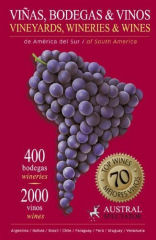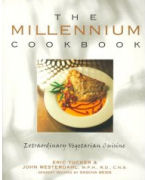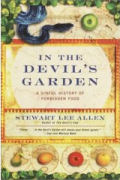Rainy Day Reading
 Buenos Aires – It’s pouring rain in Buenos Aires today, so plans for some outdoor activities, and probably even a visit to a museum have been backburnered. I promised weeks ago to give you a review of the new edition of Viñas, Bodegas & Vinos de América del Sur, or Vineyards, Wineries & Wines of South America. This book is an annual guide, now in its 3rd edition (2006), published by Austral Spectator. A panel of judges selected from local experts (primarily Argentina and Chile, some from Brasil and Uruguay as well) are brought together to taste through wines submitted from various wineries throughout the continent. Any winery that wishes to participate may, but it is voluntary, and based only on submissions, so it is definitely a selective view of what’s happening in South American wine. That said, for the first edition there were less than 300 wineries participating and less than 1500 wines, in this edition there are now 394, and over 2000, respectively.
Buenos Aires – It’s pouring rain in Buenos Aires today, so plans for some outdoor activities, and probably even a visit to a museum have been backburnered. I promised weeks ago to give you a review of the new edition of Viñas, Bodegas & Vinos de América del Sur, or Vineyards, Wineries & Wines of South America. This book is an annual guide, now in its 3rd edition (2006), published by Austral Spectator. A panel of judges selected from local experts (primarily Argentina and Chile, some from Brasil and Uruguay as well) are brought together to taste through wines submitted from various wineries throughout the continent. Any winery that wishes to participate may, but it is voluntary, and based only on submissions, so it is definitely a selective view of what’s happening in South American wine. That said, for the first edition there were less than 300 wineries participating and less than 1500 wines, in this edition there are now 394, and over 2000, respectively.
Having spent a fair amount of time reading through all three editions, I can say that the new one has vastly improved. First and foremost, it is far less self-congratulatory. The original edition goes on ad nauseum about the importance of each of the participants and how much work went into producing the tasting and the book. I’ve talked with several of the folks involved in the judging panel, and according to them, much of what was in the first, and still some in the second edition, was apparently just made up. The claims to have visited nearly every winery in the book were simply not true, in fact few actually had been visited by anyone from the guide, instead they relied on reports of the wineries themselves as to conditions and practices. In the new edition this has been pretty much eliminated, plus, over time, many of the wineries have now actually been visited.
The information in the book, especially that relating to the industries in the various countries covered (Argentina, Bolivia, Brasil, Chile, Paraguay, Perú, Uruguay, and Venezuela) and the specific regions, is more comprehensive, more accurate, and more interesting. The book is written in Spanish, with a side-by-side translation into English. The English translation is far more readable than it was in past editions – it is less literal (the first edition at points looked like someone had sat down and just done a word for word translation without the knowledge of English grammar or style) and instead covers the same material, accurately, but written to make sense. The maps are clear and comprehensive. For those who simply must have a rating system, they’ve opted for a one to five star rating, along with a price level indication. The writeups on the individual wineries are quite good, including contact information, which is a real plus for wine travellers.
The book starts off with a detailed listing, with descriptions, of the Top 70 Wines of the year. From my perspective, it is unfortunate that so many of these are wines made in “the international style.” My gut feeling from the tasting, and from reading the book, is that there is too much of an emphasis amongst the judges on trying to find, and like, wines that will get high scores in international publications. That attempt to “fit in,” is in my view a mistake. This book ought to strike out on its own and create a new path, and a serious and critical look at the quality of wine making in South America. That doesn’t necessarily mean only looking for wines made in traditional fashion, many of which were low quality bulk wine, but perhaps to look more for wines that emphasize the qualities of traditional grapes. Of the “top 70,” 41 were Cabernet Sauvignon, Merlot or a blend with those, 9 Syrah, 1 Pinot Noir, 1 Sauvignon Blanc, and 1 Chardonnay, virtually all aged in new oak barrels and with high alcohol levels. Only 11 pure Malbecs, 3 Tannats, 3 Carmenères, and not a single Torrontés, made the grade.
As I said above, this is a self-selected sampling of wineries, obviously there are far more than 394 wineries in South America, though many still produce basic table wine for local consumption. The book is a fascinating read, and an equally fascinating view into a part of the world’s wines that many folks in other parts of the globe either don’t have the opportunity, or don’t make the opportunity, to taste. It’s well worth its list price in the U.S. of $58 (though I’d note that Amazon is offering it at $36 – and also, for some truly bizarre and inexplicable reason, in a duo-package with a DVD of an Argentine film, Last Images of the Shipwreck from 1985), and certainly its local Argentine price of 90 pesos.
 The first book I opened is the cookbook from the chef and staff of the Millennium restaurant in San Francisco. Aptly enough, not only for the restaurant but for the age we’re living in, the book is called The Millennium Cookbook; Extraordinary Vegetarian Cuisine. And it is. Extraordinary. First, the book is beautifully designed. Eye-catching photos, both color and sepia-toned, are liberally placed throughout the book. The graphic layout and color choices for text are equally enticing. Secondly, the book is a pleasure to read. The authors start by noting that their readers undoubtedly have different motivations for picking the book up – and all are equally valid.
The first book I opened is the cookbook from the chef and staff of the Millennium restaurant in San Francisco. Aptly enough, not only for the restaurant but for the age we’re living in, the book is called The Millennium Cookbook; Extraordinary Vegetarian Cuisine. And it is. Extraordinary. First, the book is beautifully designed. Eye-catching photos, both color and sepia-toned, are liberally placed throughout the book. The graphic layout and color choices for text are equally enticing. Secondly, the book is a pleasure to read. The authors start by noting that their readers undoubtedly have different motivations for picking the book up – and all are equally valid.  The second book I approached with trepidation. Heaven’s Banquet; Vegetarian Cooking for Lifelong Health the Ayurveda Way already had the ring of dogma and brown, mushy food. Happily, my fears were unwarranted. The book certainly contains whole sections devoted to spirituality and vegetarian cuisine, and it is peppered with quotes and quips from spiritual texts. However, there is an easy-going, at times almost tongue-in-cheek approach to the presentation of the food and its relationship to life.
The second book I approached with trepidation. Heaven’s Banquet; Vegetarian Cooking for Lifelong Health the Ayurveda Way already had the ring of dogma and brown, mushy food. Happily, my fears were unwarranted. The book certainly contains whole sections devoted to spirituality and vegetarian cuisine, and it is peppered with quotes and quips from spiritual texts. However, there is an easy-going, at times almost tongue-in-cheek approach to the presentation of the food and its relationship to life. Baltimore – I just finished the book In the Devil’s Garden: A Sinful History of Forbidden Food by Steward Lee Allen (Ballantine Books, 2002). I love stuff like this. History, speculation, romance, and a bit of comedic relief, and it’s all about my favorite topic – food! The book is an exploration into food taboos, both current and historical, and a look at where they came from, and the results of varioius laws, edicts, codes, and other such attempts to regulate their ingestion.
Baltimore – I just finished the book In the Devil’s Garden: A Sinful History of Forbidden Food by Steward Lee Allen (Ballantine Books, 2002). I love stuff like this. History, speculation, romance, and a bit of comedic relief, and it’s all about my favorite topic – food! The book is an exploration into food taboos, both current and historical, and a look at where they came from, and the results of varioius laws, edicts, codes, and other such attempts to regulate their ingestion.